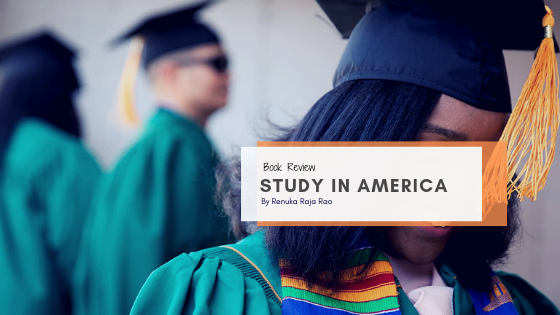
Study in America’ is a fitting job by an author who had the privilege of first-hand information about those wanting to study in the U.S., being an Advisor with the United States Education-India Foundation [USIEF]. The USIEF being the education information arm of the U.S. Embassy is the one-point information center, aspirants for the U.S. student visa turn to, for advice. The book is a compilation of such information with great add-ups like Interviews of U.S. University professionals as well as valuable information for preparing a good admission application. The book also touches upon important aspects of the U.S. student visa issues.
The book does meet the expectations of a reader in terms of content to age. Updated information, trends, and statistics make the book a useful tool for any serious aspirant. However, the content could have been supported with some graphic illustrations related to the data and timelines, as creative info- graphics are available for reporting the trends, which the reader would have found captivating.
The book is of course very appropriately titled ‘Study in America’, thereby setting the limits to students particular interested in studying in the U.S. only. The blue, red and white cover page symbolizing the U.S. flag greatly compliments the title. The target readers for the book obviously remain aspirants for a U.S. education; especially those who have defined and singled down the education destination options to the U.S.
The book has a good visual appeal, as well as, the print quality and readability are up to the mark. Some pictograms, maps and graphical representations of timeline break the monotony of a black and white color text to some extent. Overall, it’s a reasonable well job done given the constraints of publishing a two-color book.
The book is a credible source for information on the trends in international student mobility to the U.S. The section ‘College Argot’ would be very informative for a student seeking an introduction to the basic terms related to studying abroad. The interviews of University Professionals lending the other-side of view to a reader is perhaps the USP. The book certainly is a good reference tool with information like sample essays and letters of recommendations, providing hands-on help to the reader. Key issues like ‘transferring students’; what the consular seeks for in the student; questions and answers related to critical visa questions, that have all been well addressed. Real-time stories of students who were successful in obtaining a visa walk the reader through a series of steps one is likely to go through during the visa interview. However, the chapter on American History could have been left out.
Though the author makes allowance for virtually every bit of information a reader would want out of the book on studying in the US, the information could have been supported with interesting Info graphics, especially for reporting data trends by the Open Doors. While the author gives the student a comprehensible picture by detailing students’ visa success stories, the book would have been a better read by also including stories of students who were unsuccessful in getting a visa. Perhaps, analysis of the reasons why the visas were granted or refused would have given the reader a deeper insight into evaluating the consulate expectations. Much to my surprise, the school listings were incomplete with many universities not listed. The sample formats for the admission as well as visa application were not comprehensive enough. The author appeared to be dishing out information that was authenticated by the USIEF but seemed very guarded about presenting information and views beyond the ambit of USIEF. The book is a good compilation of issues related to studying in the US, however, the author did not seem to deliver much beyond the safe-zone of authenticated facts and figures, easily accessible to a USIEF advisor. I would view the book as an excellent source of information for a competitive student; however, the moderates may find the book not sizing up to their quest for issues concerning them.
Renuka Raja Rao utilises her resourcefulness into putting together information in the form of a book. The author’s purpose of writing a book to offer technical advice on studying in the US has been quite well delivered. However, little could be credited to the author’s individual research on the subject as the information resources of the USIEF largely supported the content of the book.
